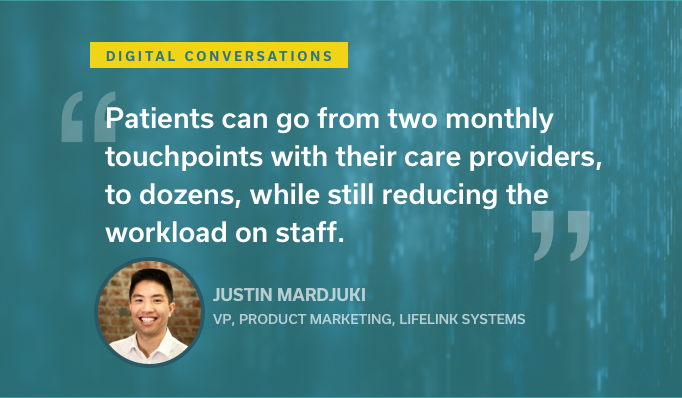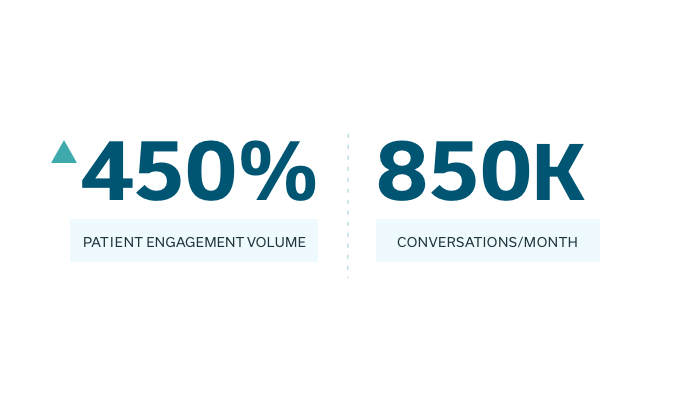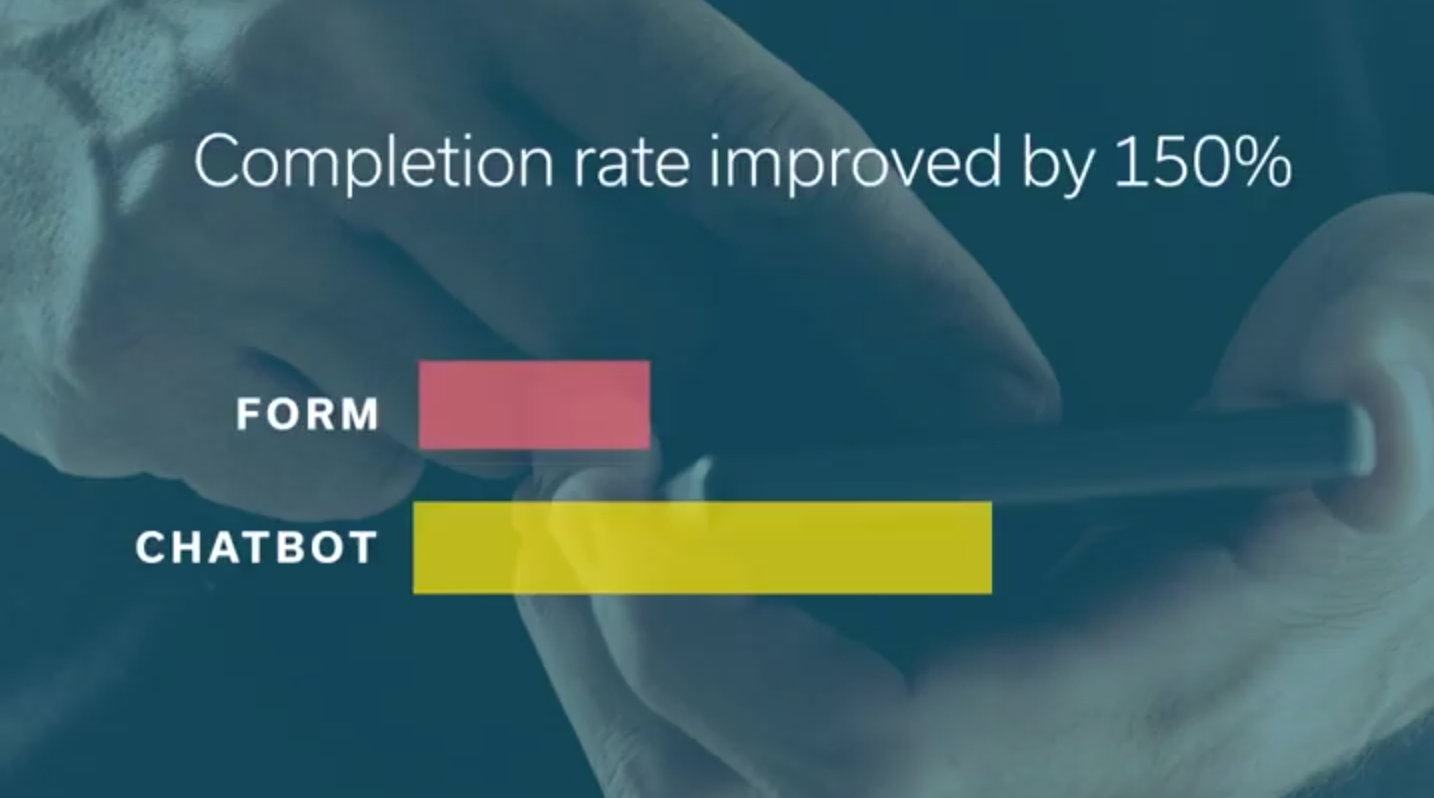Greg Kefer: (00:07)
Welcome to Digital Conversations. This is Greg Kefer, and I'm joined again by Justin Mardjuki. Justin, good to have you back on the show. How are you doing today?
Justin Mardjuki: (00:16)
Hey Greg, thanks for having me again.
Greg Kefer: (00:18)
Yeah, we like to talk about innovation in healthcare. And I think one of the things that has been out there in the 'thought leadersphere,' if there's such a word, is robotic process automation or RPA. That's been a hot theme. We'll get into that a little bit. And patient engagement is another one that's taken on a new level of urgency since COVID came around and is still with us. But what happens when these things overlap potentially? I think that's an interesting topic for a podcast conversation. So here we are. You ready? All right. So first off, I thought we would start by maybe defining, describing the respective spaces. You know, technology is known for acronyms and categories. The analysts love that; they make a fortune off creating them, but let's talk about robotic process automation. RPA is the acronym. What is that? And maybe why is it important for healthcare?
Justin Mardjuki: (01:15)
Yeah, so robotic process automation, or RPA... It's technology that makes it just easier to deploy and manage, you know, robots that mimic human actions. And the idea is you can point this type of technology at any type of repetitive process that humans have to do today. So that could be entering information to billing systems, or moving information from your CRM system into your medical record system. You can imagine there are hundreds or thousands of these types of tasks that consume hundreds of thousands of hours for staff at large companies and RPA...the goal of it, is to automate a lot of that process, and make staff much more efficient.
Greg Kefer: (01:56)
And if you think about healthcare, where is it prevalent today? I mean, what are some of the areas, the functional zones within healthcare organizations, hospitals, or life science companies, where this is beginning to take hold?
Justin Mardjuki: (02:08)
Yeah. So healthcare in particular is an interesting place to point RPA because there are on average, six support staff for every clinician in healthcare. And those support staff are doing everything from checking patients in, to collecting their paperwork, to following up on referrals or moving their data into the EMR in a hospital system setting, or in life sciences. That could be entire armies of clinical research associates that are helping conduct trials. So, RPA has been used in healthcare to automate a lot of, particularly the back office processes, things that have to do with billing, with data management, with workflow management of patients throughout visits or throughout encounters.
Greg Kefer: (02:48)
Right. Okay. So then let's flip to the other zone. Then we'll talk about how these two things converge potentially, and that's patient engagement, which you and I have had many discussions about on this podcast, but it's a broad category. There's probably a thousand companies that claim they have a patient engagement solution out there, but you know, we've kind of honed in on mobile, conversational chatbots is something that's emerging because it's proven to be more effective or most effective in getting patients to actually use it. You know, it takes a lot of the hurdles away about downloads and passwords and learning, et cetera. So I guess in the context of the discussion we're about to have, how would you define what's happening in patient engagement today as being kind of relevant to how RPA might fit into the equation?
Justin Mardjuki: (03:35)
Yeah. I think there's been a shift over the last 10 years of digital health, you know, 10 years ago, there was still a lot of focus on just engagement for engagement's sake, right? How do we get patients to adopt any type of digital technology, whether that's an app on your phone, a portal on your computer or anything in between. And that has really shifted to a place where you want engagement to generate specific value for either the patient or the healthcare organization. So it's not just, do you have a number of daily active users or monthly active users on your app? It's well, how many patients are actually using those technologies to check in for their appointments, or complete their pre-visit paperwork, or enroll in a clinical trial? So there's been a definite shift over the last 10 years to use engagement and technology that can replace manual processes, but point it at specific workflows that patients have to get through.
Greg Kefer: (04:28)
Right. And these workflows are often very complex and require an integration to an EMR or a CRM system of record, you know, behind the scenes to get the data, to write the data back to those systems. And these are workflows that are somewhat complex, you know, like checking in for an appointment virtually or putting somebody on an adherence program for a drug. And you and I have had this chat about the idea that you could scale human teams that, you know, call centers, for example, armed with this technology can be relieved of the robotic processes that humans don't necessarily need to perform. So you begin to see emerging taking place here, of two domains that many people might see as radically separate, but they're actually very related.
Justin Mardjuki: (05:12)
Absolutely. I think a lot of the large success stories of RPA in healthcare have been very much focused on back office processes. It's the billing, it's the data management type of workflows. And the goal has always been, how do I make my staff more efficient? How do I increase throughput by another 20%, 30%, 40%? And I think, you know, what's very powerful about combining these two trends is that you can now point that same efficiency and increase in throughput, but make it patient-facing. So patients can go from just having two touch points a month with their care providers to dozens potentially, while still reducing the overall workload on staff. So it's a really powerful concept when you can make it outward-focused because healthcare has really struggled to scale up the number of touchpoints and to build out a relationship with their patients, and marrying these two technologies could be the way that we get there.
Greg Kefer: (06:07)
Yeah. Yeah. You've touched on something there. You know, what happens when I make my internal teams X percent more efficient, right? What happens when you make your patient population — say millions of people — more efficient, and what happens when those two worlds combine?
Justin Mardjuki: (06:22)
Right. One of the places that, of course we spend a lot of time thinking is medical information, helping patients and doctors understand complex lengthy prescribing information documents. And when you can flip the switch, that's not just, how do I decrease the average handle time of the specific inquiry, but it's well, how do I equip all of the knowledge of that agent in a way that's accessible on-demand by patients so that they can learn on their own time. They can ask as many questions as they want while still reducing average handle time. You've gotten the best of both worlds. You've decreased workload, but you've also increased your engagement surface area with every patient.
Greg Kefer: (06:57)
Right. Right. You and I were talking briefly before we started the recorder here about this idea that what happens when you've got an RPA solution in place to handle some administrative work related to say appointments, you know, of which a large health system or a clinical research org could be millions a year. And you fuse that with the patient data that you're collecting and you're doing it in a very data compliant way. In other words, it's not, open-ended text, it's multiple choice where you're collecting compliant data and fusing it into the back office process. You know, that's a world that hasn't been opened yet, I would think.
Justin Mardjuki: (07:35)
Yeah, I think it's really interesting to start seeing those types of trends come out, not just in qualitative call reviews and recording reviews, which is what happens today in patient access centers or recruitment centers, where you're trying to ascertain the quality of a call by just picking a small sample size. It's a huge shift to go from a place where you're trying to grasp qualitative feedback, to optimize a process into a place where everything is quantitative and you can actually see day over day, or even minute over minute, the improvements that these types of processes can have. So in a scenario like test result delivery, hospitals are performing hundreds of thousands, if not millions, of COVID tests, you might not have the time to review every single call to understand which patients wanted additional follow-up, and which patients needed a doctor's note, but if you can combine RPA with really high patient engagement so that, you know, that 3% of 10,000 patients that need additional help, you've now infused a lot of your workforce with more smarts.
Greg Kefer: (08:34)
Right. And if you listen to the marketing of some of the big RPA providers in healthcare, there's an AI dimension, right? Where the AI is learning, you know, and if you fuse that AI with a knowledge flow of data that's compliant and controlled, it seems like it would make a very smart AI solution smarter.
Justin Mardjuki: (08:55)
Yeah. You want to see that feedback loop for machine learning to really be harnessed. You want to see the end-to-end workflow accomplished. You want to see completion rates. You want to see how the completion rate has been impacted for example, by time of day of outreach or, you know, the call to action for a particular patient population. And if you can do that at scale, I think the promise of marrying these two technologies together is large. It can be a multi-million dollar opportunity for every large healthcare organization.
Greg Kefer: (09:23)
Okay. So academic discussion, most people say, okay, that's great. That's neat. But you know, these guys are out in the etherland of, you know, fluffiness that you would hear at a conference, but the reality is this is happening. So let's pivot. You're in a position where you've been on the front lines of some implementations that get into this kind of thing. And maybe you can talk us through a couple of examples. So let's start with the life sciences industry. Is there an example that you can bring up that gets into what we've been discussing?
Justin Mardjuki: (09:53)
Yeah, of course. One of the biggest pain points in life sciences is clinical trial recruitment. Trial timelines can take up 50% of the entire trial timeline. And when you're trying to accelerate therapies to market, like a COVID vaccine, every day that you delay recruiting for a trial is extremely painful and costly. And if you think about the work to successfully recruit a participant for a trial, it's very scripted, it's repetitive, it's IRB-approved, it's all protocol driven. And there's always a backend system of record, whether it's a recruitment system or a trial management system. So this idea that, you know, to take the kind of vague concepts of RPA and better engagement through conversational AI, if you can combine those things to help guide participants through all of the steps of recruitment, which could be a dozen calls with clinical research associates, and 50 pages of paperwork, and allow patients to do that on their own time, while getting all the data back into the backend systems, and walking them through that entire process in a compliant way. The value that you're talking about here is in the tens of millions of dollars for a large Phase 3 study.
Greg Kefer: (10:58)
When you consider the fact that when you say 'engaged people,' it's many orders of magnitude higher than through other forms, right? That, you know, you're seeing in rates that are 50, 60, 70, 80%, which technologically is a big hurdle that has not been accomplished until now. What about a hospital? If I'm a big hospital system, how might this be applied to some part of my world?
Justin Mardjuki: (11:20)
Yeah. You know, every hospital system I think has fundamentally changed because of COVID. Things that do not have to be in person are no longer in person, and patients, aren't just appreciative of technology like this, they're actually demanding it. They don't want to be waiting in waiting rooms. So, one of the use cases that we've seen that again, is a perfect marriage of RPA and conversational AI, is the virtual waiting room. Everything that has to happen as a patient between the time that appointment is scheduled to the time you show up for that visit, whether it's an in-person visit or a telehealth visit, traditionally was done on paper or in person at the front desk, and you would have a patient access agent or a clerk print out the forms, give them to you, and enter them back into the system. And if you think about the role that RPA can play to deploy out the right intake forms and the right reminders to patients, as we see those scheduled visits come up, and provide that really elegant, personalized front end for patients that no longer needs to have a one-on-one conversation with the patient access agent, you've hit on a tremendous value opportunity from both a patient experience perspective, as well as an operational overhead perspective from the hospital system.
Greg Kefer: (12:25)
Right. It's such a clear example. Patients hate waiting rooms. That's a workflow that's seen its time come, and it's time for it to go, and we know, when you hand back those forms, I wonder how people can even interpret what what's scribbled down on those things by most people, right? So you just don't know what's being typed back into the system. So what happens next? You know, this is cool stuff. Do you see this kind of marriage moving up the digital priority list?
Justin Mardjuki: (12:52)
I think so. I think we've seen a lot of organizations shift towards a much more tight view of what engagement should produce for their organization. So it's not just about producing another website, producing another mobile app or another portal. It's about getting credible business results out of those experiences. And in order to do that, you do need this marriage because, you know, engagement systems that are out on an island that aren't integrated to the backend systems of record, that aren't tied into staff workflow, ultimately end up creating more work for the staff that they were supposed to help. So I think forward-thinking organizations and savvy digital teams are really diving deep into understanding what the specific business problems are that they're looking to solve, whether it's virtual waiting room for provider systems, or clinical trial recruitment for life sciences, and really understanding what is the best interface to put in front of a patient to help them accomplish the tasks that we need them to accomplish. And then, how do we actually automate as much of that scripted, repetitive report as possible because we know 80% of the work of a patient access agent or clinical research associate ultimately is governed by a repetitive protocol. So I think we're going to see a lot more of this in the coming years.
Greg Kefer: (14:05)
I think you're right. I mean, I think that, especially in the virtual waiting room story you shared, you're talking about millions of encounters a year for just one system. And if you think about just the value of that, and what it could bring to a back office RPA environment, it's pretty cool, right? There's like you said, tens of millions of dollars? That could be higher. Who knows? But, I think we'll have to circle back on this topic again, Justin, but thanks for coming on. Great content, great input. We'll be back again soon.
Justin Mardjuki: (14:33)
Thanks Greg.
Greg Kefer: (14:34)
This has been Digital Conversations.
Greg Kefer: (14:39)
Thanks for listening to Digital Conversations. If you liked our show, you can always subscribe on iTunes, and feel free to like, retweet, and share on your social networks. This and other episodes are available on iTunes, Spotify and Linkedin.com. We'll be conversing again soon with a new episode. So long.






